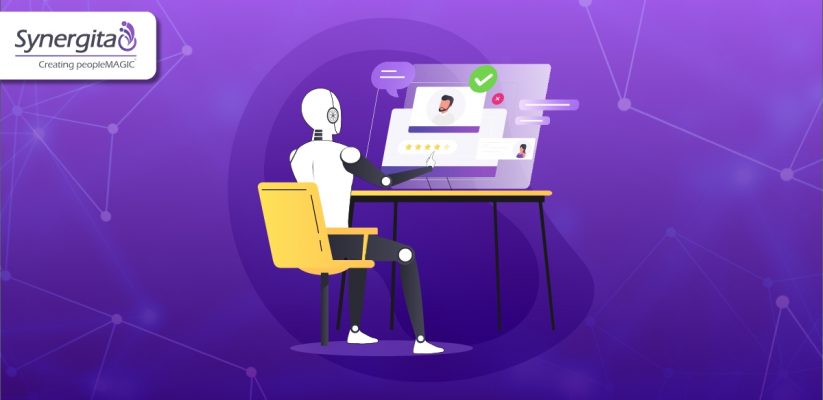How to Leverage HR Technology Insights to foster Employee Engagement in the Workplace
The ever-dynamic job market is reshaping how businesses function and interact with their employees and consumers. Business leaders must therefore reconsider how their organisations perceive, handle, and manage employees.
To increase employee engagement and productivity at work, foster resilience, and advance business objectives, successful businesses must develop flexible workforce strategies that align with their company’s overall strategy. So – is it any surprise that HR technology tools garner a lot of attention?
According to a survey by Verified Market Research, the Human Resource (HR) Technology Market was valued at $23.32 billion in 2021. It is anticipated to increase to $38.36 billion by 2030, with a CAGR of 5.7% from 2022 to 2030.
Employee engagement software is one such HR technology tool that can go a long way to boost productivity and ROI.
Why is employee engagement at work meaningful?
According to business executives, increasing employee engagement in the workplace is one of the top five global business strategies. After all, employee engagement at work significantly impacts employee retention, productivity, and loyalty.
In fact, many executives know that employee engagement directly impacts an organisation’s financial stability and profitability. However, according to a Gallup study, only 33% of workers are actively engaged in their work. And given that 52% of employees claim to be “simply showing up” and 17% identify as “actively disengaged,” most companies still have a long way to go before fully leveraging their workforce.
Thus, organisations are looking to HR technology to enhance employee commitment and engagement and gain a competitive edge.
So, let’s look at five tips for accelerating, improving, and sustaining employee engagement at work.
5 tips for driving Employee Engagement with HR Technology
1. Shifting to a people-first mindset
The pandemic has rendered employee engagement a corporate responsibility and underlined the necessity of putting employees first. Many businesses have realised that issues affecting employees on a human level, such as health issues, anxiety, stress etc., require a human reaction.
When implementing a people-first mindset, businesses should strive to foster a culture of feedback where two-way communication is encouraged and supported. Promoting active feedback and health and wellness benefits can improve the work culture, resulting in higher employee engagement, productivity and retention.
2. Adopting cloud technology
In terms of employee engagement, the cloud will continue to drive innovation. As of 2018, 75% of businesses used the cloud for at least one HR process. However, by 2020, 72% of companies were using the cloud for most of their primary HR applications.
Businesses are discovering that administration, payroll, and sign-in systems are the cloud-based HR applications with the highest ROI. Therefore, organisations should automate processes whenever possible using cloud-based technology to engage employees and create a more seamless experience.
3. Implementing Artificial Intelligence (AI) & Machine Learning (ML)
HR tools have become more sophisticated and effective thanks to Artificial Intelligence (AI) and Machine Learning (ML). Many forward-thinking businesses are leveraging AI and ML to automate repetitive processes, undertake deep learning, and boost employee engagement at work.
For instance, businesses use ML to remove recruiting bias by scanning and selecting top-quality candidates from candidate pools using predictive patterns and intelligent APIs. AI may process big data to produce valuable workforce insights, which HR departments can employ to customise resources and responses.
4. Bringing back the ‘Human’ in Human Resources
Due to COVID-19, remote and hybrid workplaces have become the norm. The growth of remote teams has accelerated digital transformation and increased the adoption of digital solutions. Businesses must use digital solutions to enhance employee engagement without neglecting to provide the human component of HR.
To give HR professionals more time to tackle tasks like value-based initiatives and recognition, it is a great idea to implement technologies that automate monotonous tasks. Additionally, you can relieve your HR personnel of the responsibility of following up with managers and employees to complete performance reports on time. Notification engines will effectively end the task and assist HR teams in expediting the review process.
5. Recognising efforts and offering feedback
Employees desire recognition and rewards while working towards a company’s objectives. Organisations may use technology to efficiently and effectively encourage employees, reward them, and maintain an engaging environment. Employee motivation is increased by virtually recognising a job well done. Additionally, online platforms offer a seamless, real-time solution for tracking performance and achievement and asking and receiving employee feedback.
How can HR Technology boost Employee Engagement at Work?
Since employee engagement in the workplace is a dynamic requirement, employers must implement a flexible strategy. Owing to unpredictably changing work environments that seem the norm today, companies are now more conscious of the value of employee engagement at work. Businesses that focus on engagement by paying attention to the above insights can expect an improvement in employee satisfaction and productivity, ultimately benefiting their corporate objectives.
Synergita can help you enhance your HR tech stack to create high-performing teams. Our performance management system helps create an enriching, rewarding and satisfying workplace with feedback reports, talent information, recognition options and more.
Sign up for a free trial to see how we can help you.
Also read:

